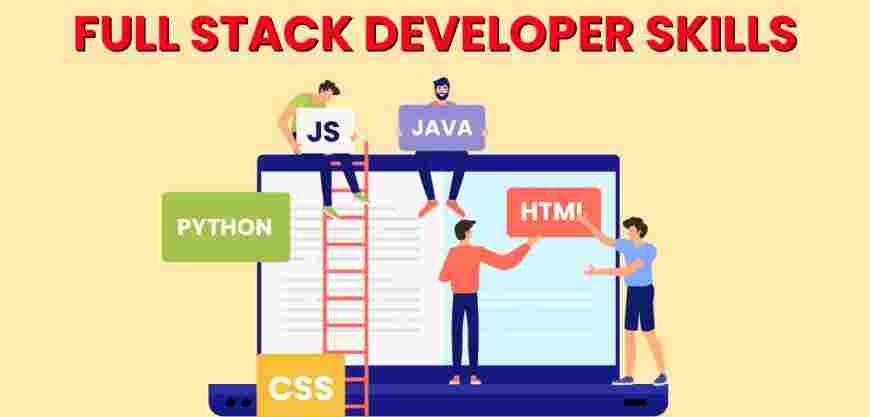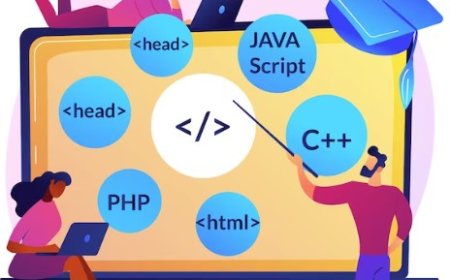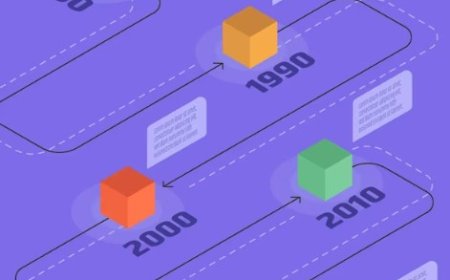What Is Full Stack Developer: Essential Skills Required
Explore the role of a Full Stack Developer and discover the essential skills required for success in this versatile field.

Full Stack Developers have emerged as versatile and indispensable professionals capable of navigating the entire spectrum of web development. A Stack Developer is an individual equipped with a comprehensive skill set, proficient not only in front-end technologies that enhance user experiences but also in back-end frameworks that drive the functionality of applications. This multifaceted role demands a blend of expertise in various programming languages, databases, and server management, allowing these developers to seamlessly bridge the gap between the user interface and server-side operations.
The evolution of Full Stack Development has been fueled by the need for agile and efficient solutions, as businesses increasingly seek professionals capable of handling end-to-end development processes. In this exploration of the essential skills required for a Full Stack Developer, we delve into the diverse talents and competencies that empower these tech-savvy individuals to conceptualize, build, and optimize robust web applications.
The Complexity of Modern Web Development
Modern web development has become increasingly complex due to several factors. First and foremost is the rapid evolution of web technologies and frameworks. New tools, libraries, and frameworks are constantly emerging, each with its own set of features, best practices, and compatibility requirements.
Additionally, the demand for highly interactive and dynamic web applications has risen, leading to more intricate client-side development. Single-page applications (SPAs) and complex user interfaces require a deep understanding of JavaScript frameworks like React, Angular, or Vue.js.
Challenges Faced by Developers in Managing Both Frontend and Backend
One of the unique challenges in modern web development is the need for developers to be proficient in both frontend and backend technologies. Traditionally, developers were often specialized in either frontend (client-side) or backend (server-side) development. However, the current trend leans towards full-stack development, requiring individuals to have a comprehensive understanding of both aspects.
Coordinating between frontend and backend components can be challenging, as changes in one may impact the other. Additionally, ensuring data consistency and smooth communication between the client and server poses a set of challenges. Developers need to be adept at handling databases, server-side logic, and APIs, as well as creating responsive and intuitive user interfaces.
Need for a Comprehensive Skill Set to be Effective
Successful modern web developers need to possess a comprehensive skill set that goes beyond just coding. Apart from mastering programming languages and frameworks, developers must also be well-versed in version control systems, deployment processes, and debugging tools.
Understanding design principles, user experience (UX), and user interface (UI) design is increasingly important as developers are often involved in creating visually appealing and user-friendly applications. Moreover, knowledge of security best practices is essential to protect applications from potential vulnerabilities.
Essential Skills for Full Stack Developer
Frontend Skills
1. HTML, CSS, and JavaScript proficiency
HTML (HyperText Markup Language): Proficiency in creating well-structured and semantically meaningful markup for web pages. This includes understanding the various HTML tags, attributes, and their proper usage.
CSS (Cascading Style Sheets): Mastery of styling web pages using CSS to enhance the visual presentation. This includes knowledge of selectors, properties, and the box model, as well as an understanding of layout techniques like Flexbox and Grid.
JavaScript: A strong command of JavaScript, the scripting language that enables dynamic content and interactivity on web pages. This includes knowledge of variables, data types, control structures, functions, and asynchronous programming.
2. Experience with frontend frameworks
React Proficiency in building user interfaces using React, a popular JavaScript library developed by Facebook. This involves creating reusable components, managing state, and understanding React's virtual DOM for efficient rendering.
Angular: Expertise in developing dynamic web applications with Angular, a TypeScript-based framework maintained by Google. This includes building modular components, managing data binding, and utilizing Angular's dependency injection system.
Vue: Competence in Vue.js, a progressive JavaScript framework for building user interfaces. This includes understanding Vue's reactivity system, component-based architecture, and its ease of integration with existing projects.
3. Responsive web design and cross-browser compatibility
Responsive Web Design: The ability to create web pages that adapt and display effectively on various devices and screen sizes. This involves using techniques such as media queries and flexible grid layouts to ensure a seamless user experience across desktops, tablets, and mobile devices.
Cross-Browser Compatibility: Ensuring that web applications work consistently across different web browsers such as Chrome, Firefox, Safari, and Edge. This includes testing and addressing compatibility issues to provide a uniform experience for users regardless of their choice of browser.
Backend Skills
1. Server-side programming languages
-
Node.js: A runtime environment that allows you to execute JavaScript code server-side. It's particularly well-suited for building scalable network applications.
-
Python: Known for its readability and versatility, Python is widely used for backend development. Frameworks like Django and Flask are popular choices.
-
Ruby: Often associated with the Ruby on Rails framework, Ruby is a dynamic, object-oriented language that emphasizes simplicity and productivity in coding.
2. Database management (SQL and NoSQL databases)
SQL Databases
-
An open-source relational database management system (RDBMS) known for its speed and reliability.
-
Another powerful open-source RDBMS with a strong emphasis on extensibility and SQL compliance.
-
A lightweight, embedded database that is well-suited for local development and smaller applications.
NoSQL Databases
-
A document-oriented NoSQL database that stores data in flexible, JSON-like documents. It's great for handling unstructured data.
-
A highly scalable NoSQL database designed for handling large amounts of data across distributed commodity servers.
-
A key-value store often used as a cache or message broker, known for its speed and simplicity.
3. API design and development
-
Follows the principles of Representational State Transfer (REST), using standard HTTP methods like GET, POST, PUT, and DELETE for communication between clients and servers.
-
A query language and runtime for APIs that enables clients to request only the data they need. It provides a more flexible and efficient alternative to traditional REST APIs.
-
Involves implementing authentication and authorization mechanisms, using techniques like OAuth, JWT (JSON Web Tokens), and API keys to ensure data integrity and protect against unauthorized access.
-
Creating comprehensive API documentation is crucial for developers who will be integrating with your API. Tools like Swagger/OpenAPI can be used for this purpose.
Additional Skills
Version Control
-
Proficient in using Git for source code management.
-
Experience with creating and managing branches to facilitate collaborative development.
-
Knowledge of Git workflows, such as Gitflow, to streamline development processes.
-
Familiarity with resolving merge conflicts and understanding the importance of a clean version history.
-
Competence in utilizing Git features like tags and hooks to enhance the development workflow.
Understanding of Web Servers and Deployment
-
Proficiency in configuring and managing web servers such as Apache, Nginx, or Microsoft IIS.
-
Experience in deploying web applications on cloud platforms like AWS, Azure, or Google Cloud.
-
Knowledge of containerization technologies like Docker for consistent deployment across different environments.
-
Familiarity with continuous integration and continuous deployment (CI/CD) pipelines to automate the deployment process.
-
Understanding of server-side scripting languages and their role in web server configurations.
Knowledge of Web Architecture and Security
-
In-depth understanding of web architecture principles, including client-server architecture, RESTful APIs, and microservices.
-
Proficient in designing scalable and maintainable web applications with a focus on performance optimization.
-
Awareness of common web security threats and the ability to implement best practices to mitigate risks.
-
Experience with secure coding practices, such as input validation, encryption, and secure communication protocols (HTTPS).
-
Familiarity with web application firewalls (WAF), intrusion detection systems (IDS), and other security measures to safeguard web applications.
A Full Stack Developer is a tech professional with a diverse skill set, capable of handling both front-end and back-end aspects of web development. Essential skills include proficiency in HTML, CSS, JavaScript, server-side scripting, databases, and more. Adaptability, problem-solving, and effective communication are key soft skills. Continuous learning is crucial for Full Stack Developers to stay competitive in the dynamic tech industry. Their ability to navigate both front-end and back-end development makes them invaluable in creating comprehensive and efficient web applications.




























































